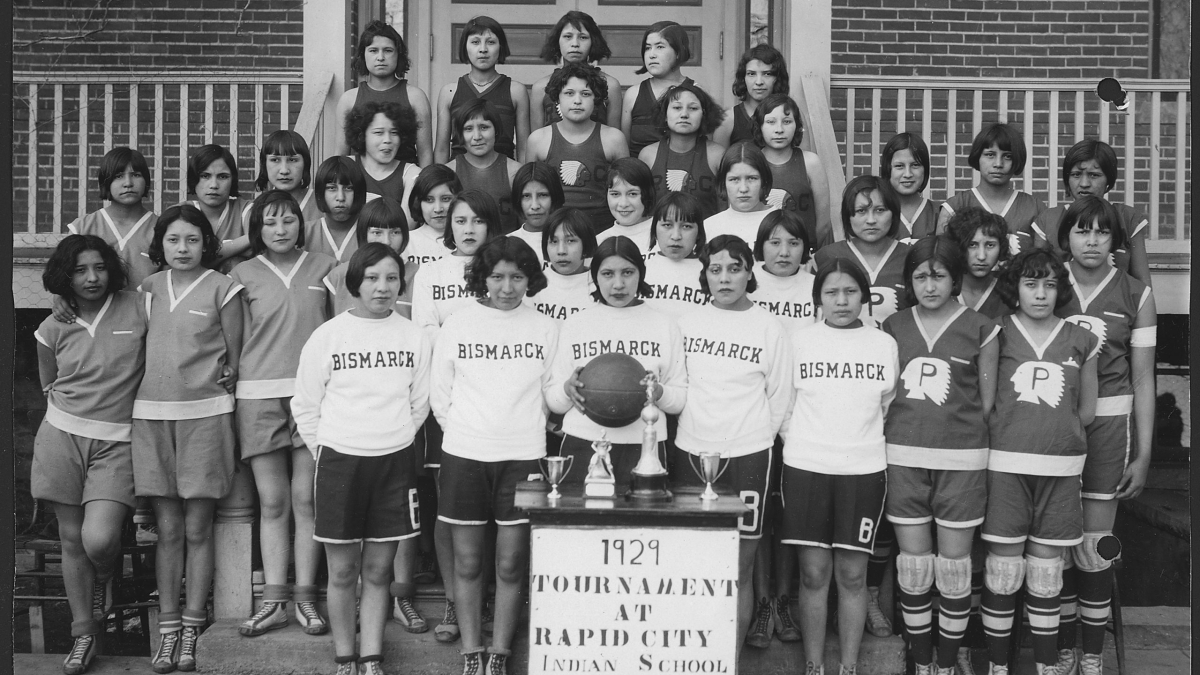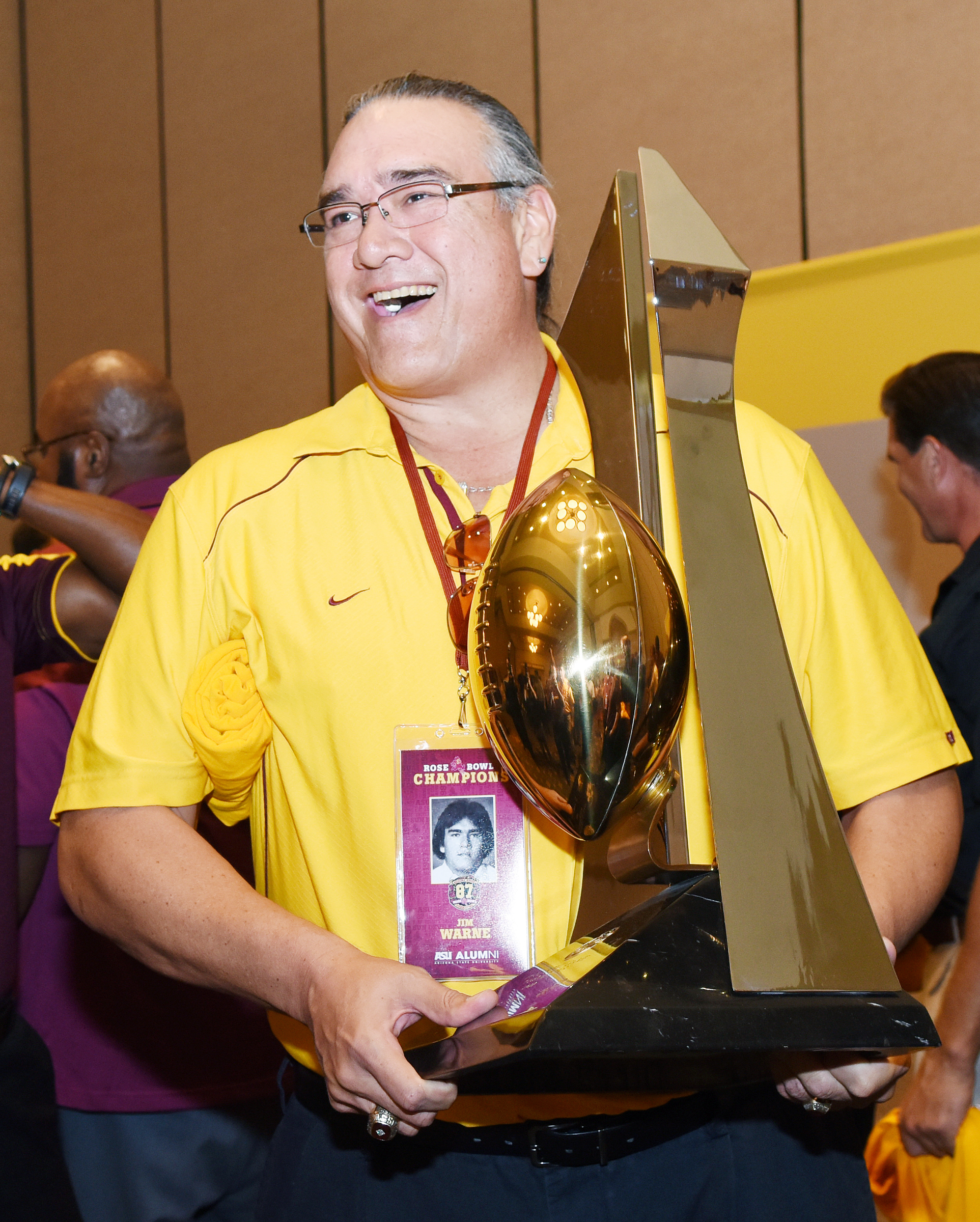In the late 19th and early 20th century, the U.S. government created and implemented more than 400 Indian boarding schools. They were often run by churches, which forcibly rounded up Indigenous children and took them to the schools in an attempt to assimilate them into American society.
In addition to being separated from their parents and their culture, thousands of children are believed to have died of abuse and neglect, many left in unmarked graves and forgotten.
Only in recent years are historians and the federal government wrapping their heads around the enormity of the abuses and the brutality of what took place.
Emmy-nominated filmmaker Jim Warne is also contributing to this history with his award-winning short film “Remember the Children.” The 22-minute documentary was a 2023 official selection of the Phoenix Film Festival, which runs from March 23 to April 2.
Warne, a member of the Oglala Lakota tribe who earned his bachelor’s degree at Arizona State University and was an All-PAC 10 tackle for the 1987 Rose Bowl Championship team, executive produced the film, which is screening under the Native American Directed Shorts category.
He spoke to ASU News to discuss the project, his film career and his time on the gridiron.
Jim Warne
Question: What is the premise of “Remember the Children,” which has already won several awards and is directed by Arlo Iron Cloud?
Answer: It’s about the Rapid City Boarding School in Rapid City, South Dakota, which opened in 1898. There were just over 400 U.S. Indian boarding schools that the federal government initiated. Most of the Native American boarding schools were administered by churches, and back then, they would literally take Indigenous kids from families and place them into these schools. Many of these kids were forced to speak English and become Christians. It was essentially forced assimilation through violence. The initial purpose of these schools was to “take the Indian out of the child.” We had a majority Lakota film team and Arlo’s vision added to the film’s Indigenous viewpoint of “our” history.
Q: Given your lineage, I’m assuming you knew someone who was raised in a boarding school?
A: My mom, Beverly Stabber Warne, an Oglala Lakota elder, is featured in the film. She attended the Pine Ridge boarding school on the reservation, near Rapid City. Her siblings were also forced to attend boarding schools. There are other elders and people interviewed for this film. In my first picture, “Seventh Generation,” there are more stories about boarding school experiences, including my mom’s weekly kerosene head wash that all the kids were forced to endure. It’s about 45 minutes.
Q: “Remember the Children” is a film short. How long is it?
A: This is just under 23 minutes. We’re hoping for additional funding to make this a feature length documentary so we can get more in-depth on the boarding school issue, as well as creating the children’s memorial. It will be the first memorial addressing the mistreatment and abuse of the children by the American Indian boarding schools throughout the United States. Until now, the only indicator is the large graveyards at many of the Indian boarding schools like Carlisle, Haskell and Sherman, with headstones indicating “Unknown” and date of death.
Q: “Remember the Children” will be screened at the Phoenix Film Festival three timesSaturday, March 25; Sunday, March 26; and Tuesday, March 28. What do you like about this festival?
A: First, I can share this film with my friends and family in Arizona. The festival, like the Phoenix metropolitan area, has grown significantly over the years. The films feature grade "A" talent and production under many categories. They also feature a Native American film section, which I appreciate as an Indigenous filmmaker. It’s nice to be able to showcase some of our work in a state that is home to 22 different tribes. Being raised here in Phoenix is a bonus for me.
Q: I’m fascinated when professional athletes make that hard left turn and become artists. Was that transition easy or hard for you?
A: I did have an artistic side growing up and was in several advanced art classes. I was very good at drawing and painting, but I let it go once I started getting more attention as an athlete. My dream was to become another Jim Brown, Fred Dryer or Alex Karas and transition from an athletic career to acting. I’m glad I’m dreaming bigger to where I’m a producer, working behind the camera and controlling the content. I have done some acting and stunt work in my younger years, but there were a lot of frustrating years because of the parts I had to play, where they tended to typecast me.
Q: What was your biggest role?
A: Undoubtedly “The Substitute” with Tom Berenger. It was released in 1996. I play “Bull,” a contract killer for a Seminole drug lord. Tom and I won “Fight Scene of the Month” on Cinemax for our first fight in the film. It was a nice month in Miami and I enjoyed myself. But it’s wonderful to be a filmmaker and an advocate for our people in my later film career.
Q: How about an ASU football story or anecdote?
A: Well, it was awesome growing up in Tempe. I remember going to ASU football games as a family during the Frank Kush era when they had great teams. My parents would take me and my brother to The Chuckbox to eat before watching a game in Sun Devil Stadium. I still have a collection of chin straps from the helmets of my favorite players that I idolized growing up — John Jefferson, Al Harris, Danny White, etc. I always made sure to give my chin straps and pads to the kids after my games.
Playing ASU football was a dream come true. Ending my career at the Rose Bowl was a bonus, then getting drafted by the Cincinnati Bengals and graduating the same year turned out to be great year for me. I have so many fond memories of ASU and am a proud alumnus. Go Devils!
Top photo: Girls’ basketball teams are seen taking part in the Tri-State Indian School basketball tournament at the former Rapid City Indian School in Rapid City, South Dakota, in 1929. The boarding school is the subject of a new documentary short, "Remember the Children." The 22-minute film is executive produced by Jim Warne, an Arizona State University alumnus and member of the 1987 Rose Bowl championship football team. Photo courtesy the Office of Indian Affairs/Department of the Interior
More Arts, humanities and education
ASU FIDM students to see their designs on the runway at Uncertainty Fashion Showcase
Nola Hill is perfecting every stitch of her fashion design collection, which she started conceptualizing last summer.She is among 30 ASU FIDM fashion design students who have been working late into…

ASU+GSV Summit brings experts together to discuss innovation in education
This week, Arizona State University President Michael Crow and other university leadership joined education and learning experts from around the globe at the ASU+GSV education technology summit in…

ASU professor's project helps students learn complex topics
One of Arizona State University’s top professors is using her signature research project to improve how college students learn science, technology, engineering, math and medicine.Micki Chi, who is a…



